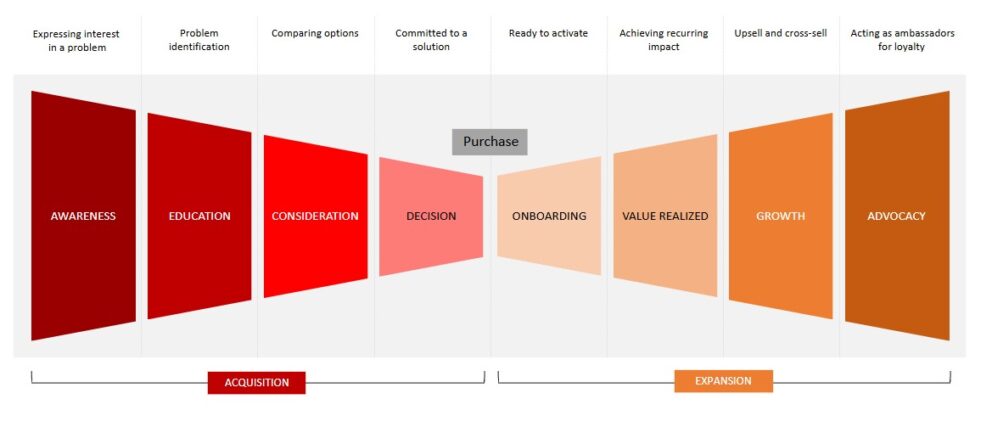4 Tips for Making Your Story into Theirs

By Tom Swanson, Engagement Manager at Heinz Marketing
“A story doesn’t work when its your story. It works when it becomes their story”
Seth Godin said that in a blog post, and it is so easy to look at that and just agree, but there is one key thing to unpack. The word “becomes” is the key component of that entire quote, because that is what we need to do. The right question is “how?”
As marketers, it is obvious to the point of cliché that messaging needs to be about the value to the customer, it needs to be their story. No matter how many times we get this wrong, and we do (often), we at least pay lip-service to this. Brands tout themselves as customer-centric, candidates feature it in interviews, and marketing classes everywhere dedicate entire slides to it. Cue the collective, “we get it” eye-roll.
As with so many great ideas, it falls apart in execution. How do we do it? How does our story become their story? This is the pickle, the puzzle to solve, the big predicament. B2B purchasing, by its very nature, is a process that demands skepticism. Buyers need to find the best tool that will fit them. The one that will make their vision a reality. The one that makes their story happen.
But enough preamble. How do we, as marketers, make our story become their story? What is the process? Across our work in B2B, we have seen a diverse array of approaches work. Here are 3 archetypes you can use to design messaging that turns your story into theirs.
Let them use the product
There is simply no better way to enable someone to make your product’s story into their own than to let them try it. Product-led growth (PLG) is a big theme in marketing these days, and the exciting part about it is that it is predicated on the very same concept as this blog (at least in my view). The concept of leading with the product means that you are putting the product out there and letting buyers layer on their own unique needs, perspectives, and desires on top.
This is like offering a scaffold to a designer. You are showing the framework of what is possible with your product, but the buyers themselves are taking their use cases and adapting the product to do what they need. This can feel scary because you don’t have as much control over the use cases and messaging, but let’s be honest, when have marketers been in control of anything? We are more experience facilitators and attention channellers, really.
The Dark Social connection

Mutual trust is the key here. If you want to leverage dark social, you have to engage with it without selling or marketing, because to do so violates the trust of a community. You might get the chance to share cool news about your company at some point, or suggest it when it is relevant, but you cannot go into the community with this in mind. It is very transparent when the reason someone is in a community is to sell rather than to contribute to and benefit from the collective knowledge resource.
At the same time, you have to trust that the results will come. This won’t work for everyone, and that uncertainty is difficult to stomach. However, they didn’t call it “dark” social because it was going to be easy.
Personalize
For an example of this, look no further than Netflix (or Amazon). A whopping 80% of viewed content is from algorithmic recommendations, according to Netflix. That is bonkers. 4/5 minutes of watched content on Netflix was recommended via its personalization AI. Why do B2B companies lag so far behind in this trend? Offering personalized pathways for content like that is an excellent way to create meaning for buyers who begin to see their problems reflected in your content.
When you provide a personalized message or experience, your focus should be on two things:
- Answer their questions quickly
- Help them envision your product in their story
If you have written the content right, it should not extoll the features of your product, but rather the benefits that buyers can have. It should paint pictures of problems solved and hurdles overcome. Combined with an engine that can get this content into the hands of the people, based on how they want to consume it, then the merging of your story and theirs is a natural next step.
Relinquish control, embrace channeling

Your job, when converting your story to theirs, is not to control buyer attention, but to channel it. You are merely providing a pathway for attention to go down, but the specifics about how fast it goes, what detours it takes, and when it finally converts is up to the buyer. If you try too hard to intervene, or grab too much control, they will simply go somewhere else.
PLG, dark social engagement, and personalized experiences will all help this, but the core idea is simple: willingly give control of the story to the buyer.
If you want to talk more about this, let me know. You can reach me at tom@heinzmarketing.com






